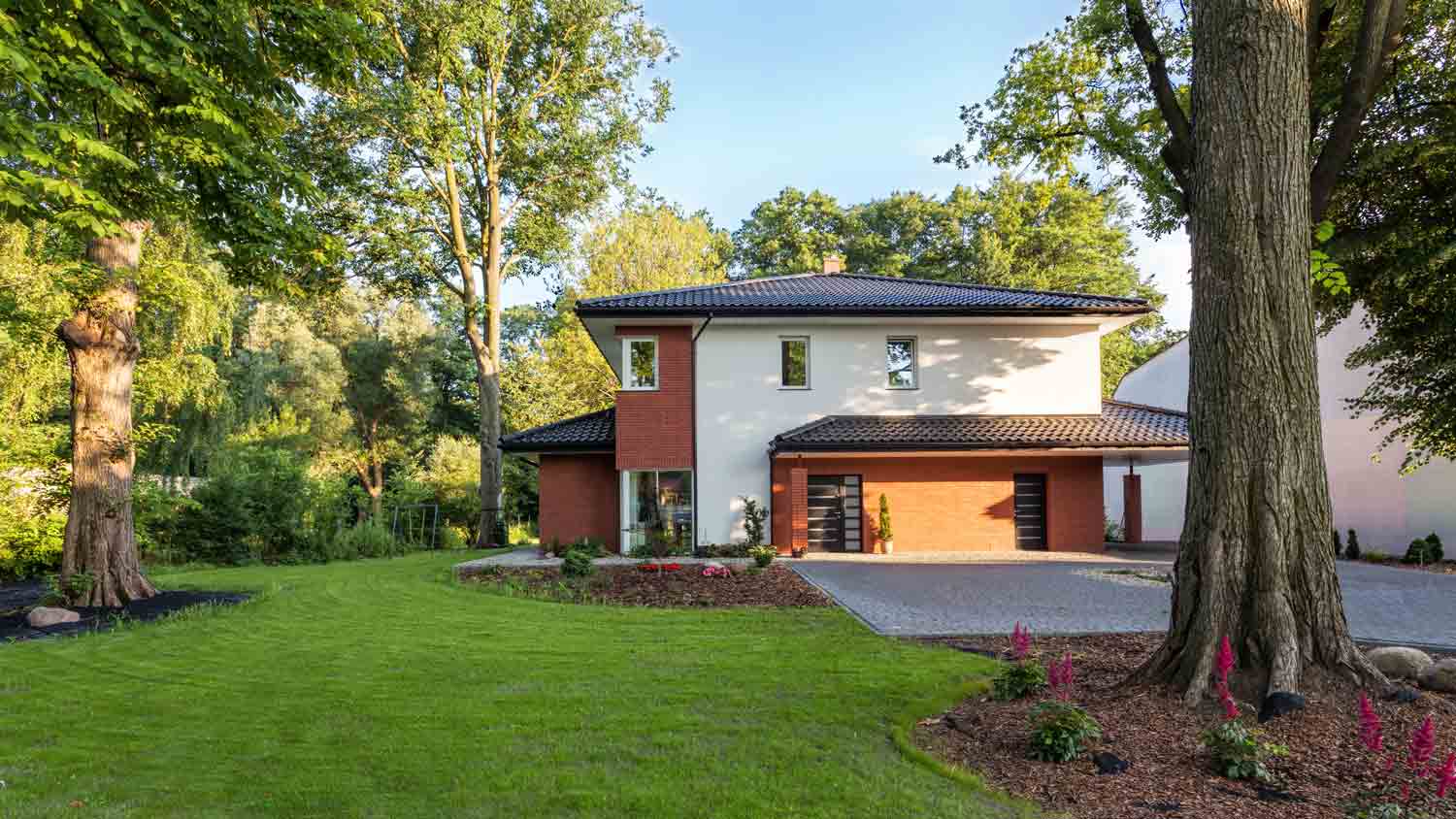10 Great Trees for Bees and Other Pollinators
It's not just perennial borders that bring the bees to your backyard


Are you thinking of creating a garden to draw in pollinators like bees, butterflies, and hummingbirds? It's usually those mixed perennial garden borders in full bloom that spring to mind. Pollinator-friendly trees are often overlooked, but they can actually be a better source of pollen and nectar than a garden packed with smaller plants.
Flowering trees produce lots of blooms, and, because they appear close together, it makes them easy for pollinators to feed from. Many trees also flower early in spring, making them a vital source of nutrition when bleary bees first come out of hibernation and other food sources are scarce.
Why Plant for Pollinators?
Bee populations are experiencing a dramatic decline worldwide because of habitat loss, climate change, diseases, and pesticides, according to the U.S. Department of Agriculture. Your blooming trees will look beautiful and help support the vital work beneficial bees do for our environment.
10 Bee-Friendly Trees
If you want to plant trees for the bees, check out this list and select species that are right for the size of your backyard and the climate and conditions.
1. Red Maple
USDA Hardiness Zones: 3 to 9
One of the most plentiful sources of early spring nutrition (perfect for stimulating brood rearing and colony building) is the red maple (Acer rubrum). While they’re a bee paradise, the “insignificant” red blooms don’t put on a showy display. But just wait: you’ll enjoy a dazzling array of colorful fall foliage.
You’ll need a sizeable garden—these fast-growing deciduous trees can reach heights of 50 to 100 feet. As long as you live in the right USDA hardiness zone, this tree is a go-to.
2. Eastern Redbud
USDA Hardiness Zones: 4 to 9
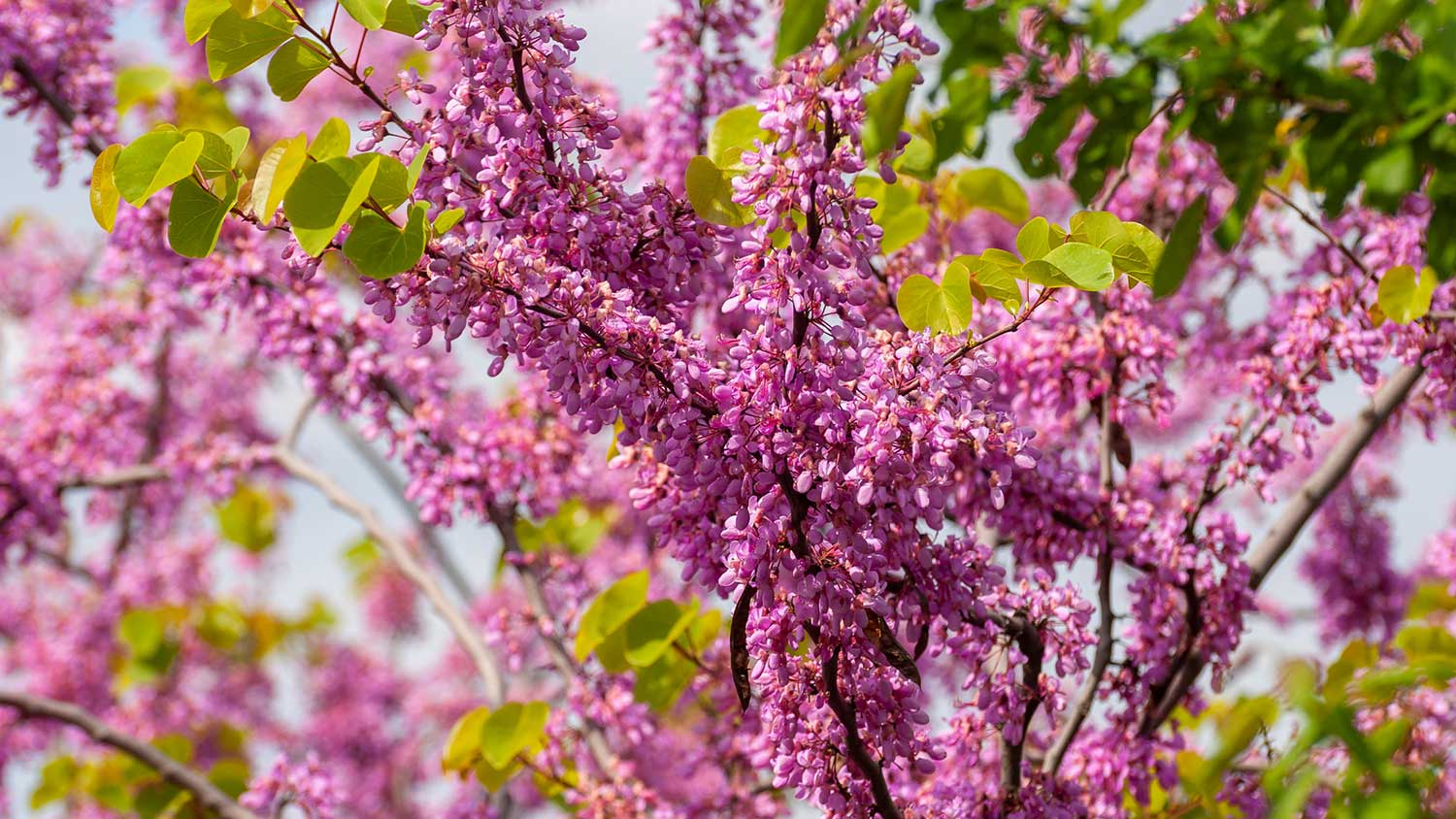
Another early spring nectar source is the eastern redbud (Cercis canadensis). Leafcutting bees also use the heart-shaped leaves to make their nests. This tree is suitable for small backyards as it rarely grows over 30 feet tall, and the showy pink flowers will delight you and your garden visitors for several weeks.
3. American Holly
USDA Hardiness Zones: 5 to 9
You might want to grow American holly (Ilex opaca) so you can take cuttings during the festive season—the iconic shiny leaves and bright red berries fit perfectly in Christmas wreaths and table decorations. Birds, bees, and butterflies will thank you too.
The inconspicuous, sweet-smelling flowers on the female plants are stuffed with nectar and the male flowers produce top-notch pollen. You’ll need male and female plants to see the signature red berries that are also a wild bird favorite. American holly is adaptable to a wide range of growing conditions and typically reaches heights of up to 50 feet.
4. Crabapple Trees
USDA Hardiness Zones: 3 to 8
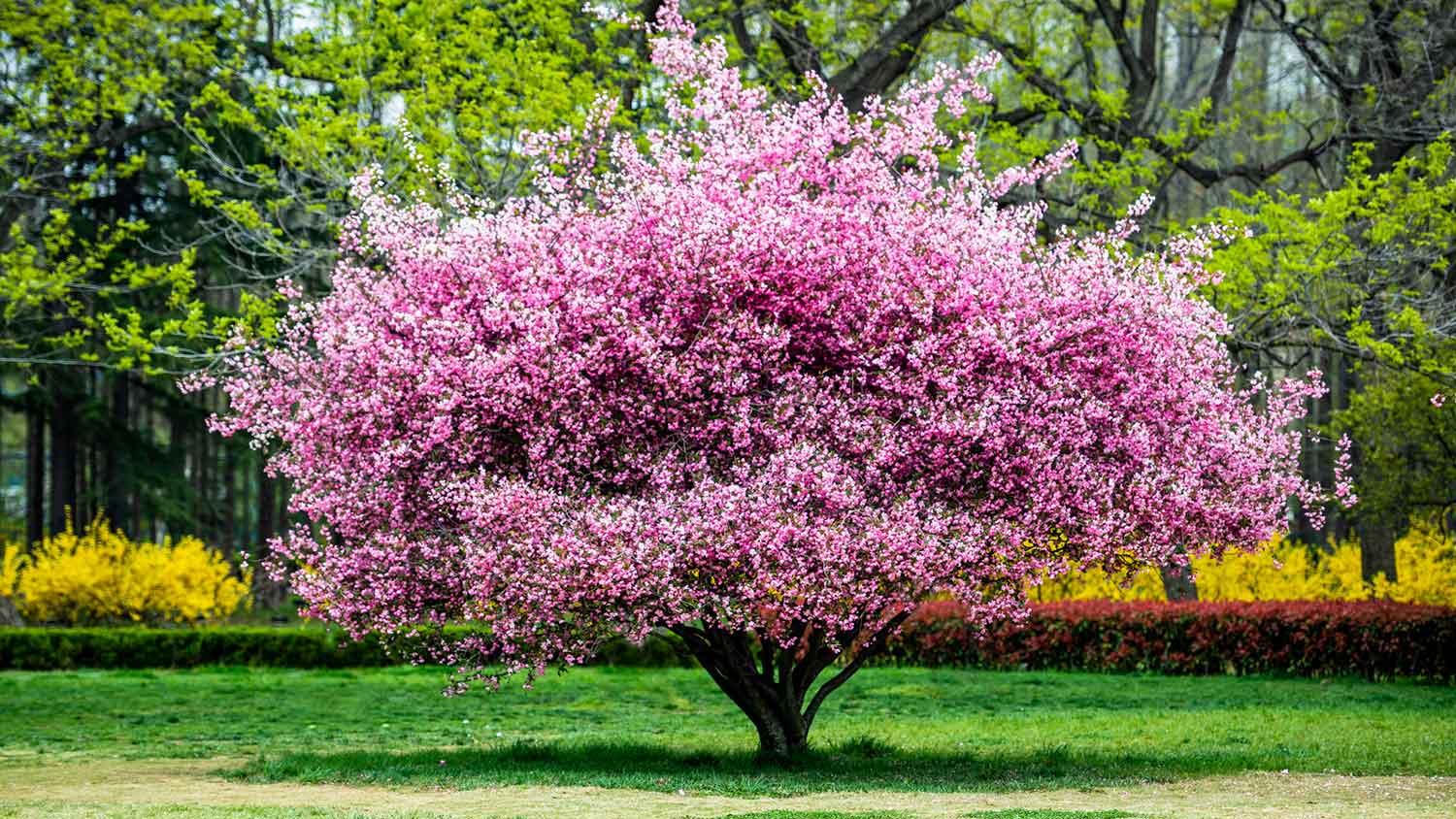
Lots of fruit trees produce fragrant blooms that pollinators go wild for. If you're looking for a native option that doesn’t grow too tall, produces abundant pink spring blossoms, and has a small, tart fruit that makes excellent jelly, look no further than the southern crabapple (Malus angustifolia).
5. Serviceberry
USDA Hardiness Zones: 4 to 8
Serviceberries (Amelanchier spp.) are perfect for providing four-season interest in small gardens. Hardy small trees or shrubs, they rarely grow taller than 20 feet. The drooping clusters of white flowers are irresistible to bees, although they only bloom for around a week in early spring. The blueberry-like berries are a feast for birds and other wildlife in the summer. These adaptable trees do well in cold-winter areas.
6. Cherry Trees
USDA Hardiness Zones: 3 to 9
Nothing says spring like the beautiful blossoms of a cherry tree. Many native American cherry species will lift your spirits after a hard winter, and they're magnets for bees, butterflies, and wild birds alike. The black cherry tree (Prunus serotina) is a great example that can grow up to 60 feet tall.
7. Pussy Willow
USDA Hardiness Zones: 4 to 8
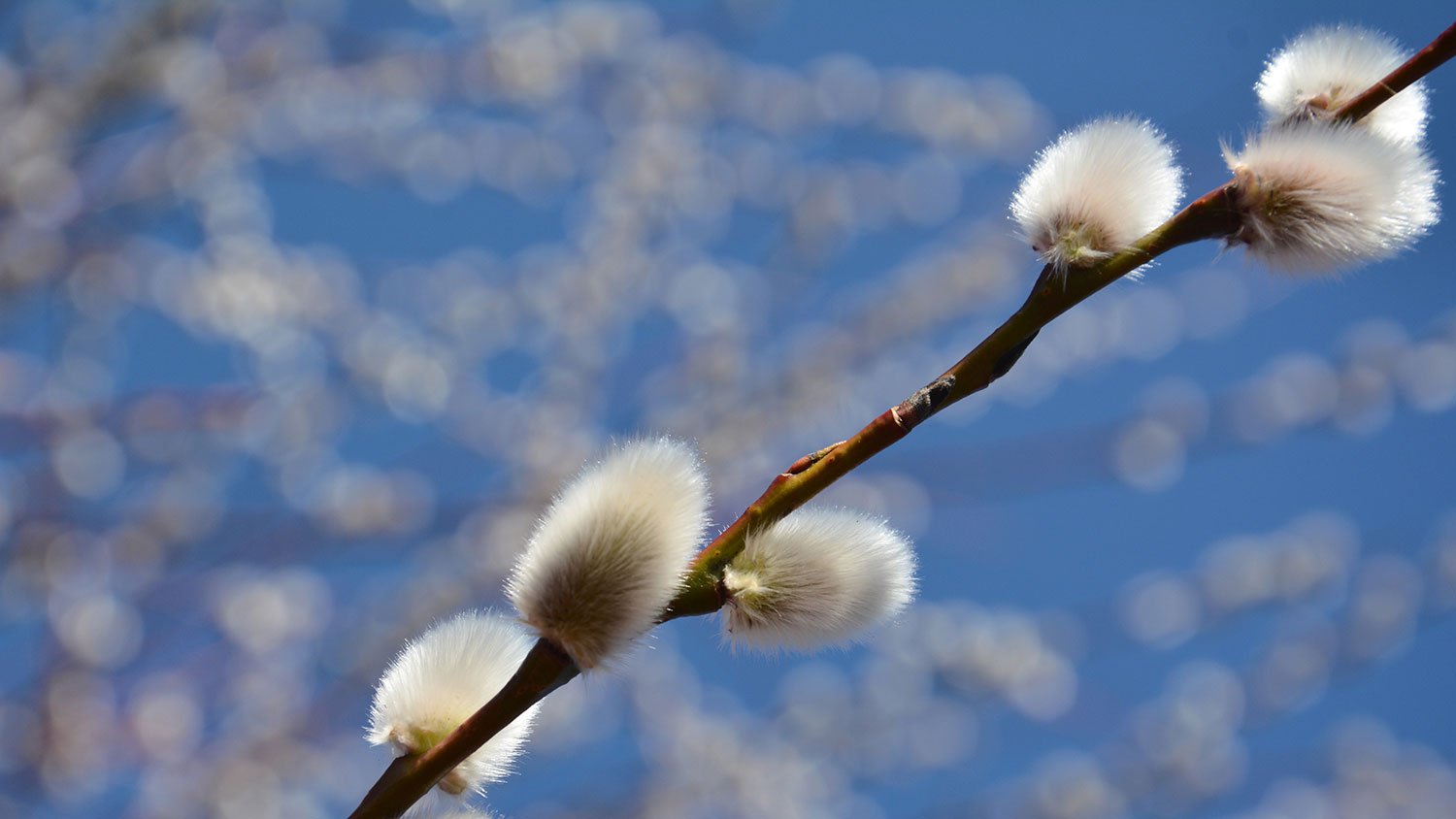
If you don’t mind the messy but cute furry catkins dropping around your yard, planting a pussy willow (Salix discolor) means you’ll be providing a pollinator banquet during those crucial late winter and early spring months. Butterflies are particularly drawn to this species. Perfect for small gardens, these shrub-like trees rarely grow over 15 feet tall, and they work well in areas prone to seasonal flooding.
8. Crape Myrtle
USDA Hardiness Zones: 7 to 9
The colorful flowers of the Lagerstroemia genus typically appear in late spring or early summer. There are many species and cultivars, but the blooms on some cultivars are more attractive to bees than others. Some good examples include 'Seminole', 'Victor, or 'Apalachee' crape myrtles. They range in height, but most fit in smaller backyards, and they’re another tree that delights with year-round interest and colorful fall foliage. They thrive in the warmer southern climates.
9. Black Tupelo
USDA Hardiness Zones: 3 to 9
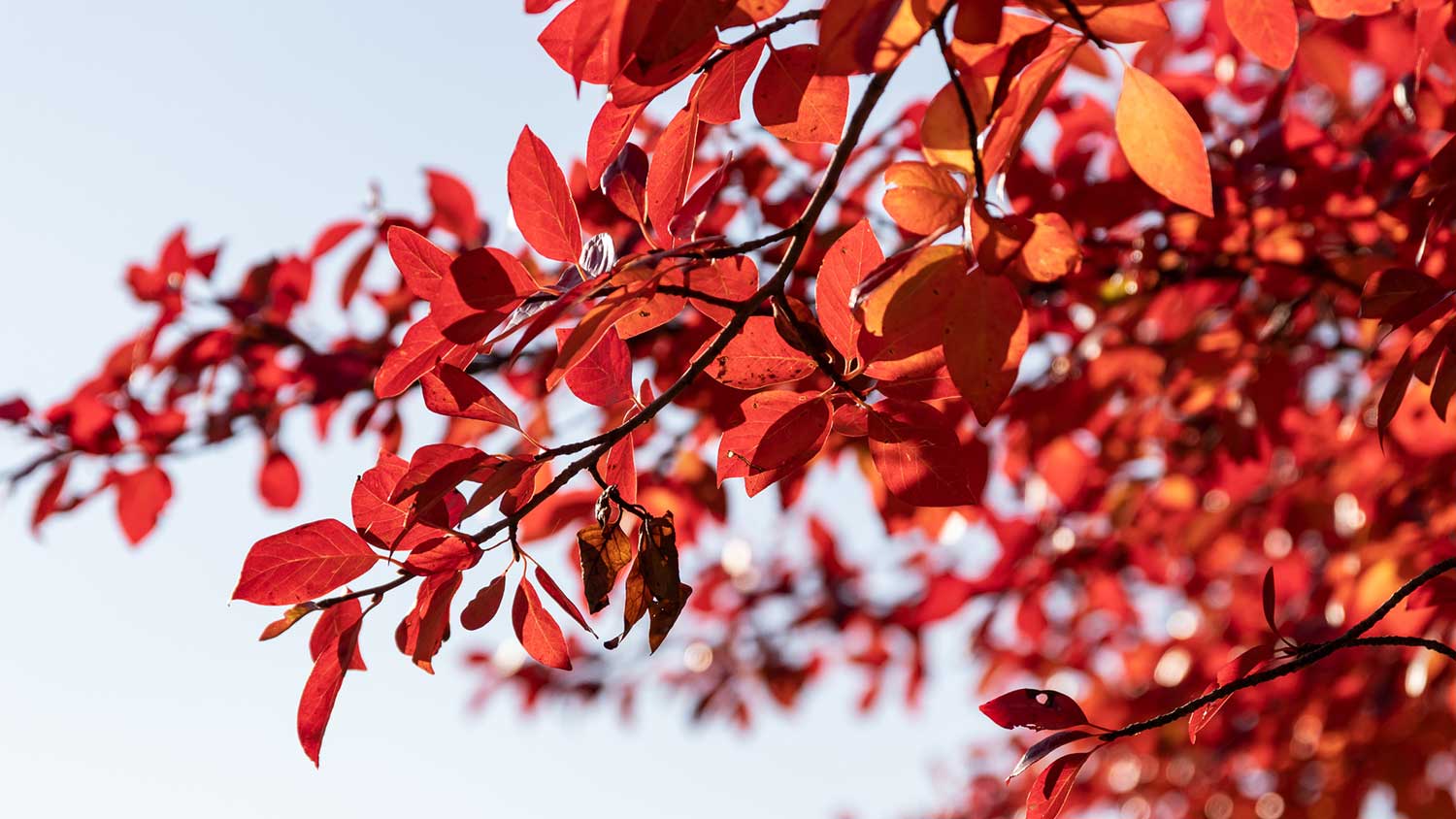
The Black tupelo (Nyssa sylvatica) is a medium-height, hardy tree that grows in various conditions. The late spring blooms are bliss for bees—tupelo honey is highly sought after by those in the know. They're famous for their spectacular fall foliage too.
Just make sure you have plenty of space for your tupelo. They might be slow-growing, but they are long-lived and can reach heights of 60 feet or more.
10. Staghorn Sumac
USDA Hardiness Zones: 3 to 8
Local bees might think they’ve struck gold if you plant a staghorn sumac tree (Rhus typhina) in your garden. This summer-blooming species provides abundant nectar for many native bee species, and birds love the bright red berries through the winter. Adaptable to various conditions, this hardy tree also stuns with colorful fall foliage. It's a compact species that grows up to 25 feet.





- Add Some Street Style: 10 Trees With Great Curb Appeal
- The Power of Trees: Learn Which Ones Can Make Your Property Value Flourish
- 13 Essential Landscaping Tips for a Beautiful Spring Garden
- The 8 Best Native Bulbs to Plant in the Midwest for Spring
- How to Tell What Type of Tree You Have in Your Yard
- What Does a Maple Tree Look Like?
- Can You Cut Down a Tree on Your Property?
- 9 Ways to Protect Your Trees From Winter Storms
- Plants That Attract Beneficial Pests, From Honeybees to Ladybugs
- 8 Common Pollinators in Your Vegetable Garden








